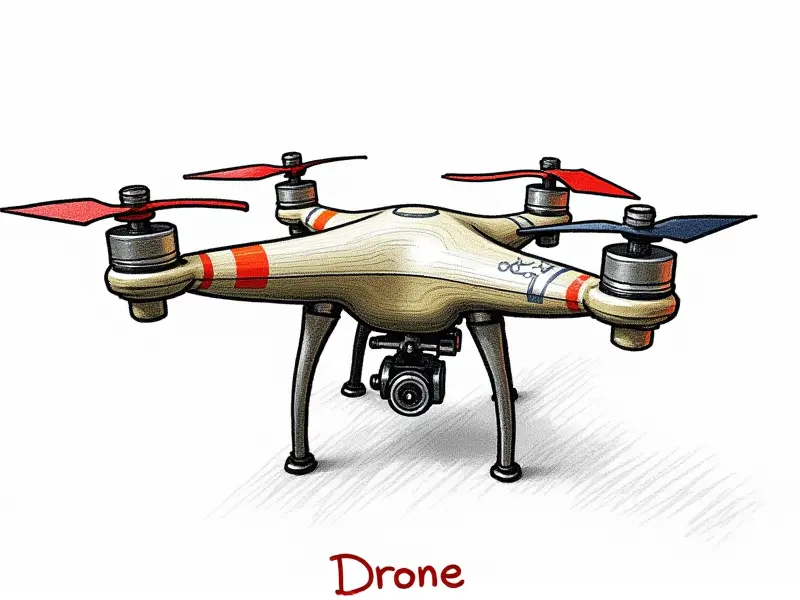Quadcopter frame types?

Quadcopter Frame Types Explained
Welcome to the world of quadcopters! Whether you're a seasoned pilot or just starting out, understanding the different types of quadcopter frames is crucial for optimizing performance and ensuring durability. This article will delve into the best quadcopter frame types, their advantages, and how to choose the perfect one based on your needs.
Best Quadcopter Frame Types Explained
The choice of a quadcopter frame can significantly impact its stability, maneuverability, and overall performance. Here are some of the best quadcopter frame types available:
- X-Frame: Known for its robust design and excellent aerodynamics.
- H-Frame: Offers superior thrust-to-weight ratio and is ideal for high-speed flights.
- V-Frame: Provides a balance between stability and agility, making it versatile for various applications.
Choosing the Right Quadcopter Frame Type
Selecting the right quadcopter frame involves considering several factors such as intended use (FPV racing, aerial photography, or general flying), budget, and desired performance characteristics. Here are some key considerations:
- Purpose: Determine whether you need a frame for FPV racing, aerial photography, or casual flying.
- Budget: Decide how much you're willing to spend on your quadcopter setup.
- Performance Needs: Consider factors like speed, stability, and maneuverability.
Top Quadcopter Frames for Beginners
If you’re new to the world of quadcopters, choosing a frame that is easy to assemble and maintain can make your entry into this hobby smoother. Here are some top choices:
- X-Frame: Easy to build and offers good stability for beginners.
- H-Frame: Provides excellent thrust-to-weight ratio, making it suitable for those who want a bit more speed.
Advantages of Different Quadcopter Frames
Different frame types offer unique advantages that cater to specific needs. Here’s an overview:
- X-Frame: Robust design, good aerodynamics, and easy to build.
- H-Frame: Superior thrust-to-weight ratio, high-speed performance, and better visibility for FPV racing.
Lightweight vs Heavy Duty Quadcopter Frames
The choice between lightweight and heavy-duty frames depends on your intended use. Lightweight frames are ideal for agility and speed, while heavy-duty frames provide durability and stability:
- Lightweight Frames: Perfect for FPV racing and aerial photography.
- Heavy Duty Frames: Suitable for high-performance applications requiring robust construction.
Understanding Common Quadcopter Frame Designs
The most common frame designs are X-Frame, H-Frame, V-Frame, and Y-Frame. Each design has its own set of advantages and is suited to different types of flying:
- X-Frame: Robust and aerodynamic.
- H-Frame: Superior thrust-to-weight ratio and high-speed performance.
- V-Frame: Balanced stability and agility.
Most Popular Quadcopter Frame Materials
The choice of material can greatly affect the frame's weight, durability, and cost. Common materials include carbon fiber, aluminum, and plastic:
- Carbon Fiber: Lightweight yet strong.
- Aluminum: Durable and affordable.
- Plastic: Cost-effective but less durable.
How to Pick the Perfect Quadcopter Frame
To select the perfect quadcopter frame, follow these steps:
- Determine your flying purpose and budget.
- Consider performance needs such as speed, stability, and maneuverability.
- Research different frame types and materials to find one that suits your requirements.
X-Frame vs H-Frame: Which is Better?
The choice between X-Frame and H-Frame depends on your specific needs:
- X-Frame: Ideal for beginners due to its robust design and ease of assembly.
- H-Frame: Best for experienced pilots who prioritize high-speed performance and visibility in FPV racing.
Top 5 Quadcopter Frame Designs Compared
Here’s a comparison of the top five quadcopter frame designs based on their features and suitability:
| Frame Type | Advantages | Disadvantages | Suitability |
|---|---|---|---|
| X-Frame | Robust, aerodynamic, easy to build. | Less visibility in FPV racing. | Beginners, general flying. |
| H-Frame | Superior thrust-to-weight ratio, high-speed performance. | More complex assembly. | Experienced pilots, FPV racing. |
| V-Frame | Balanced stability and agility. | Moderate visibility in FPV racing. | Aerial photography, general flying. |
| Y-Frame | Excellent aerodynamics, good thrust-to-weight ratio. | Less stable compared to X and H frames. | High-speed applications. |
| Triple Frame | Unique design for specific applications. | Limited availability, specialized use cases. | Niche applications, custom builds. |
The Impact of Frame Design on Performance
The frame design has a significant impact on the overall performance and handling of your quadcopter. Factors such as stability, maneuverability, and aerodynamics are directly influenced by the choice of frame:
- Stability: Affects flight control and responsiveness.
- Maneuverability: Influences agility in tight spaces.
- Aerodynamics: Impacts speed and efficiency of the quadcopter.
In conclusion, choosing the right frame is crucial for achieving optimal performance based on your specific needs. Whether you are a beginner or an experienced pilot, understanding the advantages and limitations of different frame designs will help you make an informed decision.

